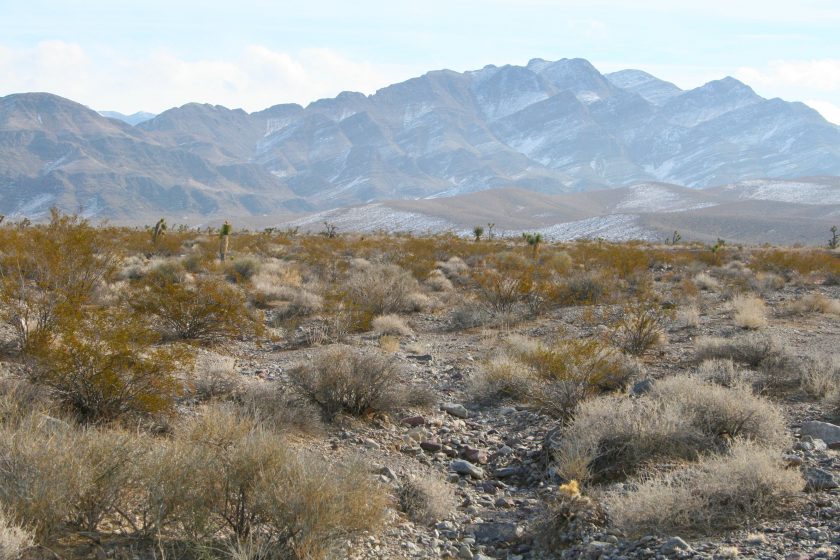‘Big Data’ Shrub Census
October 29, 2021

The scraggly creosote shrub dominates the landscape of the American Southwest, creating mini oases from the harsh heat for desert wildlife.
Using computer algorithms and high-resolution survey data, researchers at the Jackson School of Geosciences conducted the first-ever creosote census — counting every creosote plant in a 135-square-mile area of Nevada. The final count was 23 million creosotes among a total population of 66 million plants.
The census revealed new information about the plant species. It also shows how a new data technique can improve on conventional plant counting methods.
The results were published in November 2020 in the journal Landscape Ecology.
“This was first and foremost a big data project,” said Jackson School graduate student Jake Gearon, who led the study.
By analyzing the plants en masse, the scientists found that the direction of the slope, or aspect, was the main control on creosote volume — with the plants growing on east-facing slopes being about five times as bushy as plants on west-facing slopes.
“That’s five times more cover on the ground for the critters, for land use, or for understanding just how hot the ground is going to get,” said Gearon. “That has a huge impact.”
They also found that soil age influences creosote volume, with plants in the younger soil being about 27% larger than plants in the oldest.
The census is a milestone for plant science. Most plant population data comes from samples of fewer than 1,000 plants or aerial surveys that capture community snapshots. This research presents a way to account for every individual in a plant community.
“This is the first time I’ve seen something that takes plot level data and really expands it to a landscape scale, to a basin scale,” said Erik Hamerlynck, a research ecologist at the U.S. Department of Agriculture. “That’s just a huge accomplishment.”
The creosote research is built on repurposed data collected during a 2017 aerial survey of threatened desert tortoise burrows in the Boulder City Conservation Easement in the Mojave Desert.
Back to the Newsletter